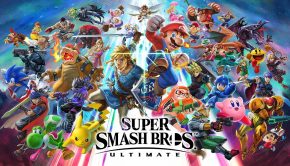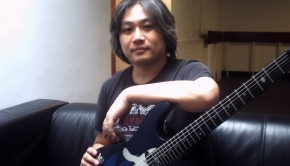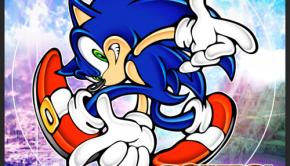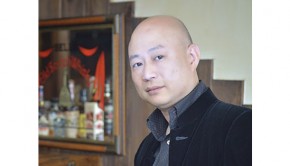Jun Senoue Profile
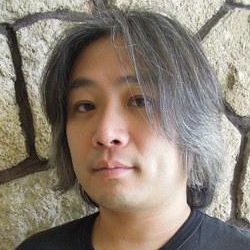 |
Also Known As: 瀬上 純 (せのうえ じゅん) / Jun Senoue / JunJun / J.Seno |
| Date of Birth: August 2, 1970 (Matsushima) |
|
| Residence: Tokyo |
|
| Game Works: Sonic, Sega Rally, Crush 40 |
|
| Official Site: English Site |
History
| Organisation | Type | Tenure | Role |
| Sega (Sonic Team) | Game Developer | 1993 – 1998 | Composer |
| Crush 40 (formerly Sons of Angels) | Music Group | 1997 – | Co-Founder, Composer, Guitars |
| Sega Studio USA | Game Developer | 1999 – 2008 | Composer |
| Bubblicious Blvd. | Music Group | 2010 | Guitars |
| Kazaly | Music Group | 2010 | Guitars |
Biography
Jun Senoue is a Japanese-American rock composer widely known for leading the scores of the Sonic series. Born on August 2, 1970 in Matsushima, Senoue was first exposed to music through his mother, an employee at an FM radio station. Receiving piano lessons from the age of just three, Senoue soon left an impression on his classmates with his performances. Moving with his family to Panama at the age of 12, Senoue regularly listened to new music through MTV and began to enjoy rock artists for the first time. Upon returning to Japan, he was inspired to start creating rock music of his own. First trying out keyboards and bass, he discovered he had more affinity for the electric guitar when 15 and started to compose thereafter. The artist also produced recordings and made live appearances with various amateur bands he established at high school. Despite loving music, he pursued a four year degree in economics at Aoyama-Gakuin University with the hope of becoming a high-flying businessman. But while participating in a college band there, he came to the realisation that music was, in fact, his life calling.
After graduating, Senoue debated between several career options and decided that his friend’s suggestion to create video game music was most exciting. He submitted demo tapes to both Sega and Namco, given these companies were increasingly using recorded rather than synthesised music. Accepted to Sega in 1993, he was delighted to receive the opportunity to contribute music for a major project: Sonic the Hedgehog 3. As one of the youngest members of the ensemble composition team, he learned about various technological aspects while working on the project – creating each piece using MIDI keyboards and sequencers before carefully programming them into the game. However, he spent the majority of his first year at Sega working on the racing game Formula One World Championship for the Sega CD. Considered a soundtrack ahead of its time, Senoue was able to capture the experience of racing with mainstream-targeted hard rock stylings; facilitated by the streaming capacity of its console, he recorded the soundtrack with an authentic rock band that he led on guitars. Simultaneously he offered technical innovations on the 32X’s Metal Head and captured the spirit of adventure on Dark Wizard and the two volumes of Game no Kanzume.
Having made a considerable impact with his debut scores, Senoue was asked to create some other cutting-edge projects for the company. Among his assignments were the annual instalments of the Sega Worldwide Soccer (aka Victory Goal) series released between 1995 and 1998 for the Saturn. The upbeat and westernised rock sound of these titles proved popular with gamers and album collectors alike. Once again, he recorded the scores with rock musicians and collaborated with vocalist Takenobu Mitsuyoshi on the ending themes. He found the pace of work demanding on these projects, but nevertheless found diverse inspirations throughout and streamlined his production work. Also in 1995, the composer took the lead composing role on the Saturn version of the submarine action game In the Hunt; he firmly made the score his own using dramatic rock stylings while still reflecting the maritime setting. In further roles, he returned to co-compose the Genesis version of Sonic 3D Blast, mixing the series’ upbeat sound with a firmer rock emphasis. Also desired on racing games, he offered several headlining tracks on Sega Rally 2, anthemic arrangements on Daytona USA Circuit Edition, and guest contributions on F1 Challenge in his characteristic style.
In 1998, Senoue achieved his popular breakthrough with Dreamcast’s Sonic Adventure. Appointed sound director for the first time, he realized that it was his duty to transform the music for the series in order to have a more modern and accessible sound. A major goal was to ensure all tracks on the score were more than mere ‘background music’ and held stand-alone appeal with memorable melodies, mainstream stylings, and impressive production values. He prepared a large number of instrumental tracks and asserted the attitude of the game’s characters with several theme songs, including the iconic rock anthem “Open Your Heart” performed by Jonny Gioeli. Following this success, He created his first score at the division, NASCAR Arcade, with the aim of appealing overseas audiences with all American rocking themes. He formed the band Sons of Angels to record the title – comprising vocalist Gioeli, guitarist Senoue, bassist Naoto Shibata, and drummer Hirotsugu Homma – and presented the results as the studio album Thrill of the Feel topped off with a bonus cover version. Facilitated by this work, he started serving as a columnist on the metal magazine BURRN!, between performing on several non-game albums and the Super Robot Taisen Vocal Collection.
In 1999, Senoue emigrated to San Francisco to become a member of Sega Studio USA in order to develop Sonic Adventure 2. As sound director, his goal was to produce music that was even more energetic, fitting, and better-produced than its predecessor. Responsibilities included forming elaborate plans about the concept of each track, dividing compositional and technical responsibilities between himself and Wavemaster’s team, and attending the five recording sessions in Los Angeles, Tokyo, and New York. As lead composer, Senoue particularly focused on conveying contrasts between Sonic and Shadow, particularly with his favourite stage compositions “Final Rush” and “Radical Highway”. The theme songs for Sonic Adventure 2 (e.g. “Live and Learn”, “Escape from the City”) were even more ambitious than the first, featuring guest contributions from various major rock artists. In order to record the main theme, Senoue continued his band project with Johnny Gioeli with a revised line-up. Calling the band Crush 40, the name started to resonate with audiences across the world. Following these successes, Senoue supervised the voice acting of Sonic Shuffle and created music for Sonic Adventure 2: Battle, personally tracking every instrument using Pro Tools LE. In addition, he united the vocal themes from Sonic Adventure 2 and NASCAR Arcade for Crush 40’s self-titled debut album in 2003.
Firmly established as the Sonic series’ lead composer, Senoue returned for Sonic Heroes in 2004. He once again composed the music with a mainstream audience in mind, though his overall goal was to create music that distinctly portrayed each stage and situation. Given he often found inspiration away from the office, he kept paper, a minidisc recorder, and a guitar with him at all times to keep track of his melodies and ideas. Once he found worthwhile ideas, he was able to arrange the fragments into full pieces ready for recording. Nevertheless continuing to support a wide range of projects outside the Sonic series, his anthemic rock sound was requested for the second and third instalments of Let’s Make a Pro Baseball Team; never letting budget get away of quality, he once again recorded these titles with his favourite vocalists and the numerous ESP guitars that he endorses. Always able to reflect the energy of racing, he also made some instrumental rock themes as a guest on Initial D: Special Stage, Sega Rally 2006, and OutRun 2 SP. In a fun side experiment, he collaborated with female vocalist Junko Noda on the single JxJ – Ready!, featuring both original themes and a game cover.
In 2005, Senoue created his most experimental score to date for Shadow the Hedgehog. He placed a focus on heavy metal for the first time, after previously focusing on mainstream rock elements, in order to capture both the personality of the antihero Shadow and the raw adulterated nature of the game. Having continued to listen to various metal artists, he felt inspired about how to develop this sound – placing a particularly strong focus on heavy guitar solos and band vocal performances, including the theme song “I Am… All of Me”. Following this work, he reunited with Crush 40 to offer Shadow’s theme “All Hail Shadow” and two well-received covers for 2006’s Sonic the Hedgehog. The artist also served as sound supervisor on Sonic Rivals and its sequel. The subsequent year, Senoue headlined the Sonic portion of Super Smash Bros. Brawl’s soundtrack with a cover of Sonic the Hedgehog 3’s Angel Island Zone and a range of original Crush 40 theme songs. In further works, he made characteristically styled contributions to Sonic’s Olympic Games and All Star Racing crossovers, between guest contributions on Let’s Make a J-League Pro Soccer Club and NiGHTS: Journey of Dreams.
After the disbandment of Sega Studio USA in 2008, Senoue returned to Sega’s headquarters in Tokyo. In 2009, he served as the sound director of Sonic and the Black Knight. Given the game took Sonic to the world of King Arthur, the artist hybridised traditional orchestral passages with a heavy rock focus. He headlined the soundtrack with several major themes, including the theme song “Knight of the Wind”, and coordinated guest contributions from prominent Japanese and Western composers. He went on to pen Sonic Free Riders’ theme song, between coordinating the production of vocal tracks for Sonic Unleashed, Sonic Colors, and Super Monkey Ball: Step & Roll. In the last several years, Senoue has celebrated his work for the Sonic series and beyond with the compilation albums True Blue: The Best of Sonic the Hedgehog, its sequel True Colors, Super Sonic Songs: The Best of Crush 40, and Jun Senoue The Works. Each album combined existing material with new compositions and covers, enhanced recordings, and previously unreleased tracks. In low-profile but fun side-projects, the ever-productive artist also joined two new bands in 2010 – namely Bubblicious Blvd. with CJ Szuter, and Kazaly with Shikyoh Iwasaka – and performed several gigs with them in Tokyo.
The artist has recently offered tributes to the series’ classic as the sound director and lead composer of the two episodes of Sonic the Hedgehog 4 and Sonic Generations. For the former, he composed in the style of the series’ classics for the Genesis by emphasising fun melodies, poppy beats, and simple structures. He aimed to create parallels between this soundtrack and earlier titles in the series, for instance creating “Splash Hill Zone” in a similar manner to Sonic the Hedgehog’s opening stage theme. The implementation process placed less emphasis on authenticity. With Sonic Generations, Senoue commemorated the 20th Anniversary of Sonic with a soundtrack that reflected the entire series’ history. His own works combined original compositions with diverse rock and electronic remixes of fan favourites – spanning Sonic the Hedgehog’s “Green Hill Zone” to Sonic Adventure 2’s“City Escape”. Different soundtracks were produced for the main console and 3DS editions of the game. Since 2008, Senoue has also started to perform live sets with Crush 40 at events such as the Tokyo Game Show in Japan, Summer of Sonic in UK, and Sonic Boom in the US – combining fan favourites with new songs such as the charity single “Song of Hope” and the new EP “Rise Again”. The band’s performances in Tokyo in March 2012 were recorded and released as a live album. Having recently contributed to Mario & Sonic at the Sochi 2014 Olympic Winter Games, it is suspected that his next big project could be the newly-announced Sonic Boom.
References:
– Various Game & Album Credits
– VGMdb Discography
– Official Site (English)
– Interview with RocketBaby (English, July 2001)
– Interview with Sega (English, February 2002)
– Interview with Sega (English, December 2003)
– Interview with Melodic Rock (English, February 2004)
– Interview with T-Bird (English, February 2010)
© Biography by Chris Greening (September 2010). Last updated on March 17, 2014. Do not republish without formal permission.
Posted on March 17, 2014 by Chris Greening. Last modified on March 21, 2014.

